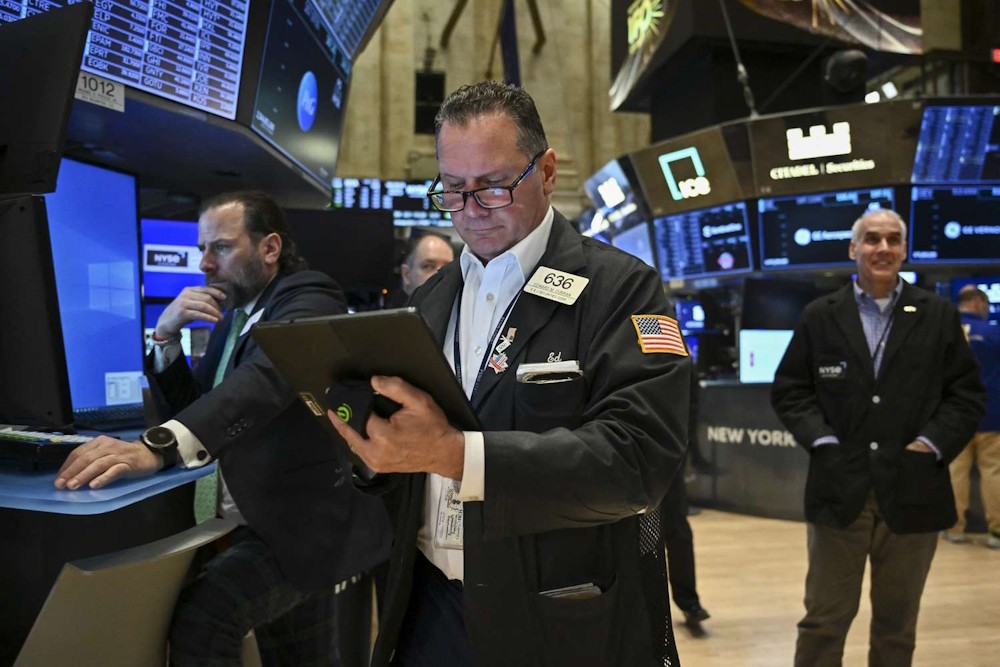
Dow Futures surge after the announcement of a significant reduction in tariffs between the U.S. and China. The agreement serves to bolster confidence regarding a potential easing of the recent trade tensions between the world’s two largest economies, which have posed risks to the global growth outlook. In the meantime, investors are anticipating crucial U.S. inflation data this week, while pharmaceutical stocks experience a decline following President Donald Trump’s announcement of an impending executive order intended to lower domestic drug prices.
U.S. stock futures rose on Monday following the announcement that the U.S. and China had reached an agreement to significantly reduce their extensive tariffs on one another. Dow futures contract had added 785 points, or 1.9%; S&P 500 futures had gained 142 points, or 2.5%; and Nasdaq 100 futures had increased by 689 points, or 3.4%. The primary indices on Wall Street exhibited a degree of restraint on Friday, as anticipation builds for the commencement of significant trade discussions in Switzerland involving representatives from the U.S. and China. The indices concluded the week with a slight decline.
The U.S. and China have reached a consensus on a 90-day suspension of escalating tariffs imposed on one another. Washington is set to reduce tariffs on Chinese goods to 30%, while Beijing will lower its duties on U.S. imports to 10%. This announcement comes in a rare joint statement after intense trade negotiations over the weekend. As the negotiations approached, Trump had elevated tariffs on China to a minimum of 145%, prompting Beijing to counter with retaliatory duties on American imports set at 125%. “The consensus from both delegations is that neither side wanted a decoupling,” U.S. Treasury Secretary Scott Bessent stated during a news conference.
Further trade negotiations are scheduled between the two parties, and both sides may engage in working-level consultations regarding pertinent economic and trade matters. Investors, concerned that the trade tensions might escalate into a global crisis potentially jeopardizing economic activity and heightening uncertainty for businesses, seem to have embraced the changes.
This week, the economic calendar is highlighted by a new monthly report on consumer prices in the U.S., which may provide insights into the effects of ongoing trade tensions. The Department of Labor’s consumer price index for April is anticipated to register at 2.4%, aligning with the figure recorded in March. Numerous analysts have cautioned that Trump’s tariff policies may reignite inflationary pressures in the U.S., while recent consumer surveys suggest that households are preparing for increased price hikes in the upcoming months. In early September, Trump announced stringent tariffs on several nations, contending that these measures were essential to rectify perceived trade disparities, enhance government income, and bring back manufacturing jobs that had been relocated abroad. Trump subsequently postponed the majority of these tariffs due to significant turmoil in the stock and bond markets.
Pharmaceutical stocks experienced a significant decline on Monday following Trump’s announcement of an executive order intended to lower prescription drug prices in the United States by 30%-80%. In Europe, shares in Novo Nordisk, AstraZeneca, GSK, and Roche all experienced a downturn, reflecting similar declines among various Asian counterparts. The policy, referred to as “most favored nation” pricing, aims to synchronize U.S. drug costs with those of other high-income countries, Trump stated in a social media post on Sunday. This may have significant implications for the profitability of European and Asian pharmaceutical companies that are heavily dependent on the U.S. market, where consumers presently incur costs nearly three times higher for numerous prescription medications compared to other affluent countries.
Oil prices increased on Monday, continuing the momentum from last week’s significant gains, as the announcement of a China-U.S. trade deal sparked optimism that the world’s two largest crude consumers might be progressing toward resolving their conflict. Brent futures increased by 2.5%, reaching $65.52 per barrel, while U.S. West Texas Intermediate crude futures saw a rise of 2.6%, settling at $62.62 per barrel. Both contracts experienced an increase of over 4% last week, driven by optimism regarding a possible easing of Trump’s tariff agenda. In other markets, the U.S. dollar appreciated while the Chinese yuan exhibited strength. Gold prices declined, possibly indicating that advancements in trade negotiations have diminished the allure of this conventional safe-haven asset.
